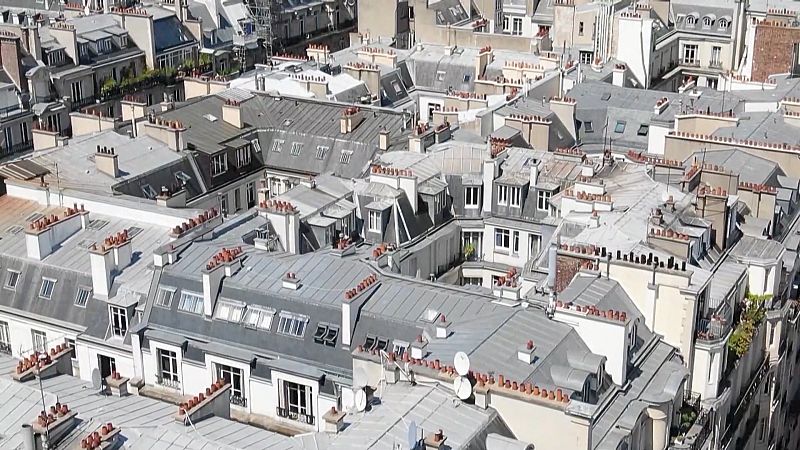Paris’ historic zinc roofs create an ‘oven effect’: This invention keeps residents cool

Zinc roofs are a historic feature of houses in Paris.
Over 60 per cent of the roofs in the French capital are made of the sheet metal and they are protected by strict urban planning regulations.
However, their heat-retaining properties are posing challenges amid climate change.
In 2022, Paris experienced temperatures over 40 degrees Celcius. Residents say the metal roofs are making the heat inside top floor flats unbearable.
Zinc roofs create an ‘oven effect’ in Paris amid rising temperatures
Paris’s zinc roofs were popularised by Georges-Eugène Haussmann during the Second Empire as part of a major urban renewal programme.
Aude Michel is a Parisian who lives in a top floor flat. “The higher you go, the hotter it gets,” she says of her apartment block.
“It can get up to 60 or 70C in hot weather. So, of course, it's an oven effect."
Faced with the scorching heat of recent summers, Michel has had to make modifications.
"We installed survival blankets on our blinds to prevent the heat from penetrating too quickly. It's not very aesthetic, but it helps us a lot.”
Zinc roofs can be ‘compatible’ with climate change
Luigi Avrillas specialises in fitting zinc roofing and says it is the ideal material because it doesn’t become porous.
“If it's properly installed, it lasts for almost a century,” he says. “For me, the quality-price ratio, given the elegance of the product and its robustness, makes it the best for roofing in Paris.”
To make the material “compatible” with climate change, Avrillas says it is necessary to fit roofs with insulation to prevent them from becoming a “thermal kettle”.
Architect designs wooden covers to prevent zinc roofs from overheating
Eytan Levy, co-founder of Roofscapes, is trialling wooden roof covers to prevent the sun from hitting the metal directly.
He's testing his idea on the roofs of the former town hall in the 14th arrondissement of Paris.
“We developed a system of platforms with metal stilts that go through the zinc to connect to the load-bearing points of the building," says Levy.
His temperature readings from 30 July this year recorded 67C at the roof surface and 47C inside the building without the wooden covers.
With protection, the readings were 35C on the roof and 29C inside.
“There's about a 17-degree difference between the shaded and sun-exposed parts of the building," he says.
Finding a solution to Paris’ urban overheating is now urgent.
“Of course, roofs are a heritage issue, but you can't tell 80, 90 or 100,000 people to go and live somewhere else," says Pénélope Komites, the city’s deputy mayor.
Saturday, november 23, 2024

